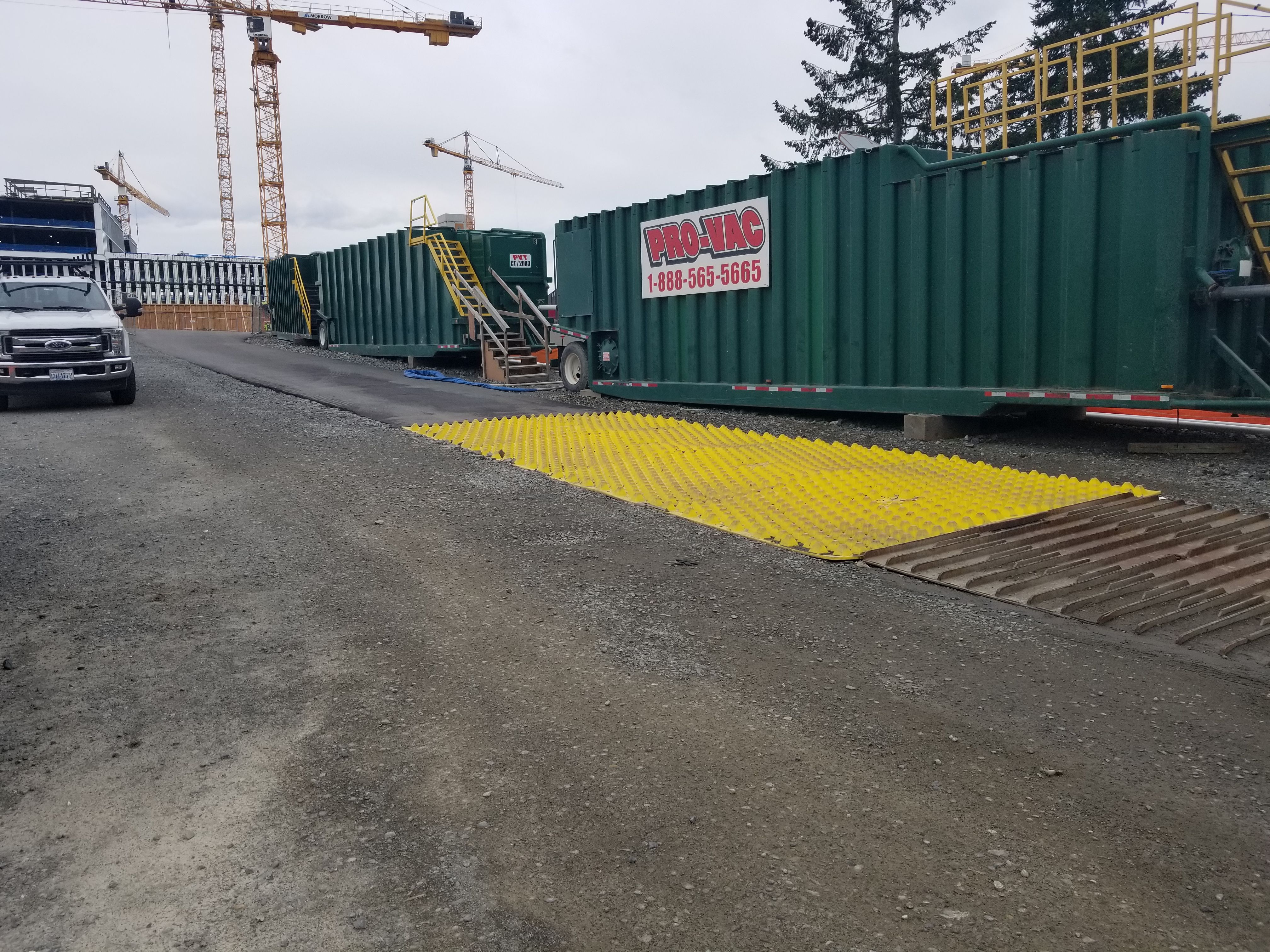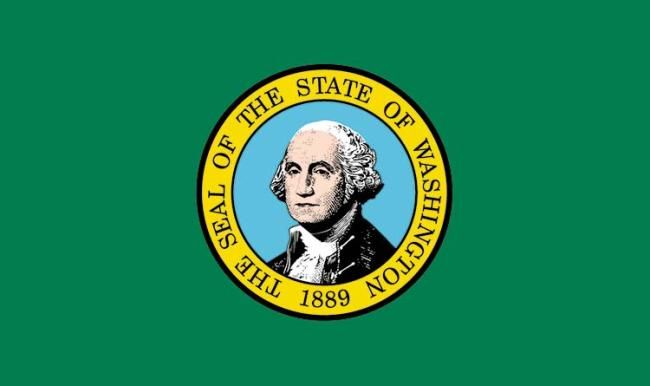Washington Stabilized Construction Entrance / Exit (C105)
The state of Washington occupies a distinctive position in the Pacific Northwest, bordered by the Pacific Ocean to the west and the Salish Sea to the north. Its landscape includes rugged coastlines, river valleys, and the Cascade Mountain Range. Washington’s frequent rainfall, especially west of the Cascades, feeds an extensive network of rivers, lakes, and wetlands that support salmon-bearing waterways and diverse ecosystems. Salmon migration remains central to the region’s cultural, ecological, and economic identity, which is why protecting water quality in Washington is both an environmental and regulatory priority.
To safeguard this delicate natural balance, the federal National Pollutant Discharge Elimination System (NPDES), established under the Federal Clean Water Act, plays a central role. Washington’s Department of Ecology is responsible for administering NPDES permits across Washington state, ensuring that construction, industrial, and municipal activities maintain compliance with strict water quality standards.
Washington NPDES Stormwater Permits
To safeguard state waters, the Washington Department of Ecology administers the National Pollutant Discharge Elimination System (NPDES) under the federal Clean Water Act. Construction, industrial, and municipal operations must obtain NPDES stormwater permit coverage if their activities may discharge pollutants into Washington’s rivers, lakes, or storm drain systems.
Construction projects that disturb one acre or more, or that are part of a larger common plan of development, must obtain coverage under the Washington State Department of Ecology’s Construction Stormwater General Permit (CSWGP). Operators prepare either a Stormwater Pollution Prevention Plan (SWPPP) or a Temporary Erosion and Sediment Control Plan (TESCP). These plans identify pollution sources such as exposed soils, vehicle traffic, and stockpiled materials, and outline Best Management Practices (BMPs) selected to manage sediment and stormwater.
Washington publishes the Stormwater Management Manual for Western Washington and the Stormwater Management Manual for Eastern Washington, reflecting differences in rainfall, hydrology, and soil conditions. Contractors must use the correct manual when selecting BMPs and preparing stormwater plans to ensure compliance with state-specific requirements.
C105 Stabilized Construction Entrance/Exit
One of the first construction stormwater BMPs installed on Washington jobsites is the C105 Stabilized Construction Entrance and Exit, which is required to minimize sediment trackout. Trackout occurs when soil, mud, and debris are carried off a construction site on vehicle tires and is one of the most common sources of stormwater pollution. The C105 entrance provides a controlled, durable surface where sediment can be dislodged from tires before vehicles enter public roads.

Washington’s stormwater manuals specify that a traditional rock-based stabilized construction entrance consists of geotextile fabric covered with a 12-inch layer of quarry spalls, a large, angular rock effective at agitating tires. Crushed concrete, cement, and calcium chloride are not allowed because they may alter stormwater pH. The entrance must be at least 15 feet wide and 100 feet long, and the drainage system must be designed to flow to an approved sediment trapping device. As projects expand, additional C105 entrances may be required.
These rock entrances require frequent maintenance. As quarry spalls become compacted with sediment, the surface loses its effectiveness and must be refreshed with new rock. Any sediment tracked onto public roadways must be removed immediately using mechanical sweepers or hand tools. If rock entrances are not sufficient, a wheel wash may be required.
C106 Wheel Wash
The BMP C106 Wheel Wash systems are installed when C105 rock construction entrances no longer provide adequate trackout control. These systems use pressurized water to clean sediment from vehicle tires and must discharge wash water to an on-site sediment basin. Wheel wash systems are effective but require space, water handling, and added operational costs, which can make them challenging for smaller or rapidly evolving construction sites.
FODS Reusable Construction Entrance SystemFODS Reusable Construction Entrance System

The FODS Trackout Control System is a reusable, engineered alternative to rock-based entrances. Each HDPE mat is molded with pyramid structures that mechanically flex vehicle tires and remove sediment as vehicles drive across. Unlike traditional quarry spalls that degrade over time, FODS mats maintain consistent performance even under heavy traffic and can be installed on soil, asphalt, or concrete.
Independent testing has shown that FODS can reduce the need for street sweeping by up to 59% on high-volume construction sites. The mats have a service life of more than 10 years and can be relocated throughout multiple phases of a project. When approximately 2.5 inches of sediment accumulates between the pyramids, the mats can be cleaned using a skid steer with a broom attachment, a street sweeper, or a shovel.
Washington Department of Ecology Approval
The Washington Department of Ecology officially approves the FODS Trackout Control System as an acceptable BMP for meeting C105 stabilized construction entrance requirements. Contractors may install FODS without seeking additional review, making it a practical solution for sites near salmon-bearing waterways, urban areas, and locations with strict stormwater oversight.

Protecting water quality in Washington requires stormwater controls that perform reliably in the state’s diverse and rain-driven conditions. By combining proven Best Management Practices with modern trackout control solutions such as the FODS Trackout Control System, contractors can reduce sediment discharge, maintain compliance with NPDES and C105 requirements, and support the long-term health of Washington’s salmon-bearing waterways. As development continues across both Western and Eastern Washington, effective stabilized construction entrances remain essential for meeting state stormwater standards and preventing sediment from reaching public roads and storm drain systems.
Additional Resources:
FODS: Recommended Layout: 1x5T
Washington Department of Ecology BMP Approval
Stormwater Permittee Guidance & Resources
Equivalent Stormwater Manuals for Municipal Stormwater Permits
WSDOT Temporary Erosion and Sediment Control Manual
WSDOT Standard Specifications for Road, Bridge, and Municipal Construction
WSDOT Standard Specifications for Road, Bridge, and Municipal Construction - Division 8
WSDOT Highway Runoff Manual (HRM)

